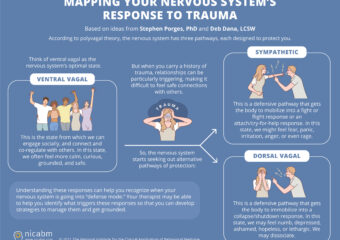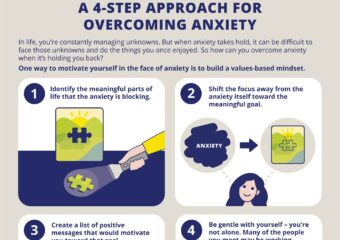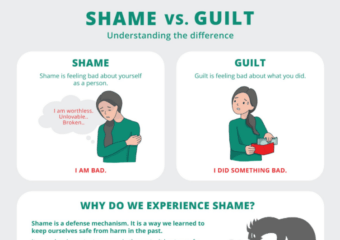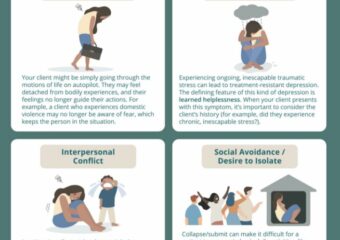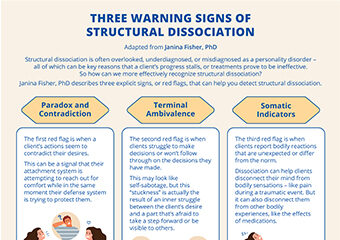How can we help clients better understand when their nervous system is going into “defense mode”? According to polyvagal theory, the nervous system has three pathways it can follow in the face of a threat. By helping clients map these pathways, they can begin to identify their triggers and develop strategies for staying grounded. That’s […]
[Infographic] A Four-Step Approach for Overcoming Anxiety
When a client suffers from anxiety, they’re often locked in worry about the future . . . . . . which can prevent them from enjoying meaningful parts of life in the present. But one way that clients can work through their anxiety is by building a values-based mindset. So in the infographic below, we […]
[Infographic] Shame vs. Guilt – A Client Handout
You’ve probably heard clients use guilt and shame interchangeably to describe their feelings. But as practitioners, we know that shame and guilt are two very different emotions, each with its own purpose and path to healing. That’s why we created this free infographic designed to help clients understand the key differences between these two emotions […]
[Infographic] – Four Key Ways Collapse/Submit Can Present in a Client
Like many of the emerging defense responses to trauma, the collapse/submit response can be difficult to recognize. So to give you a clearer idea of what this trauma response can look like, we created this free infographic that highlights four key ways it might present in a client. To put this infographic together, we gathered […]
[Infographic] – Three Warning Signs of Structural Dissociation
Working with structural dissociation can be critical in the treatment of severe or prolonged trauma . . . . . . but it’s often difficult to detect. According to Janina Fisher, PhD, structural dissociation is commonly underdiagnosed, or it’s misdiagnosed as a personality disorder. And when left undetected, it could lead to ineffective treatments that […]
